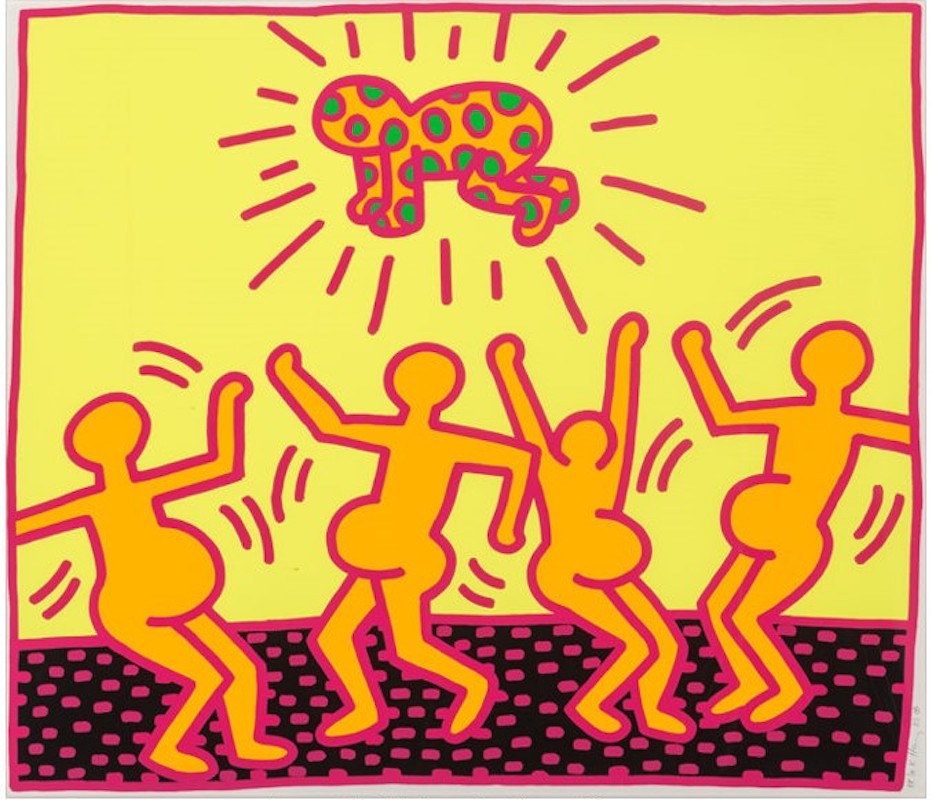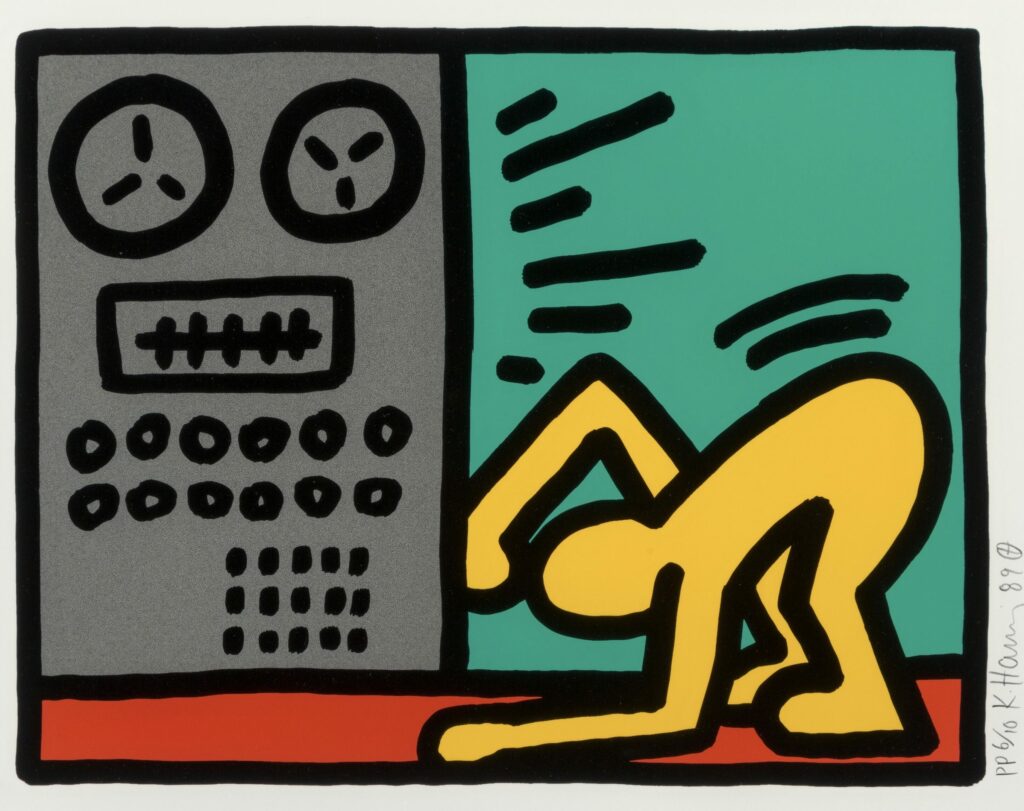Keith Haring Prints
Keith Haring prints were characterised by their bold, graphic style and use of simple, iconic imagery, and they continue to be highly sought after by art collectors and enthusiasts.
Keith Haring was an American artist and social activist who rose to prominence in the 1980s. He is best known for his bold, graphic style and use of simple, iconic imagery. He began his career as a street artist, creating chalk drawings on blank advertising posters in the subway stations of New York City. He quickly gained recognition for his work, and his prints became an important part of his oeuvre.

Haring’s first print was created in 1982, and it was a serigraph (silkscreen print) called “Radiant Baby.” The image of a crawling baby with a glowing halo, which would become one of his most iconic images, and it was used frequently in his work throughout his career. He began to produce a series of serigraphs, which were sold at affordable prices, allowing him to reach a wider audience and make his work accessible to more people.
In 1983, Haring opened the Pop Shop, a retail store in New York City, which sold his prints, t-shirts, toys, and other merchandise featuring his artwork. The Pop Shop was not only a commercial success but also a cultural one, it became a hub for the downtown art scene, and Haring’s work helped to democratise art by making it more accessible to the general public.

In 1985, Haring began to experiment with other printmaking techniques, such as lithography and etching. He produced a series of lithographs called “The Ten Commandments” which were based on the biblical commandments and incorporated Haring’s own imagery and symbols. He also produced a series of etchings called “The Apocalypse,” which dealt with themes of death, destruction, and rebirth.

In the late 1980s, Haring began to produce a series of large-scale, multi-panel prints called “The Jungle.” These prints were created using a combination of silkscreen and lithography and featured a menagerie of animals and human figures in a dense jungle landscape. The Jungle prints were a departure from his earlier, more minimalistic style and demonstrated his growing interest in narrative and storytelling.
